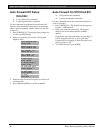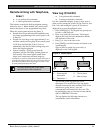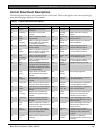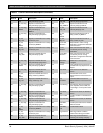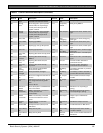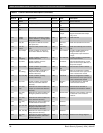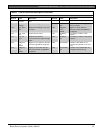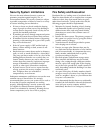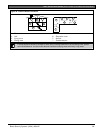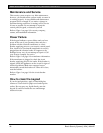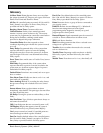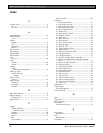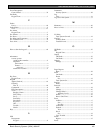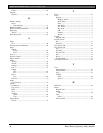
D623 Series/D625 Series | User's Guide | Security System Limitations
38 Bosch Security Systems | 9/04 | 46841E
Security System Limitations
Not even the most advanced security system can
guarantee protection against burglary, fire, or
environmental threats. All security systems are subject
to possible compromise or failure-to-warn for a variety
of reasons including, but not limited to:
• If sirens or horns are placed outside the hearing
range of people in remote areas of the building or
in areas that are frequently closed off, they do not
provide the intended protection.
• If intruders gain access through unprotected points
of entry, the system does not detect their entrance.
• If intruders have the technical means of bypassing,
jamming, or disconnecting all or part of the system,
they are not be detected.
• If the AC power supply is OFF and the back up
battery is either missing or dead, sensors do not
detect intrusion.
• Smoke detectors cannot detect smoke in chimneys,
walls, or roofs, or smoke blocked by a closed door.
They may not detect smoke or fire on a level of the
building different from the one on which they are
located. Smoke detectors may not be able to warn
in time about fires started by explosions, improper
storage of flammables, overloaded electrical
circuits, or other types of hazardous conditions.
• If phone lines are out of service, reports from the
security system to the security company cannot be
sent. Telephone lines are vulnerable to
compromise by several means.
Inadequate maintenance and failure to test are the most
common causes of alarm failure. It is strongly
recommended that you test your system once a week to
be sure that all system components are working
properly. Although having a security system may make
you eligible for reduced insurance premiums, the
system is no substitute for insurance. Warning devices
cannot compensate you for loss of life or property.
Fire Safety and Evacuation
Residential fire is a leading cause of accidental death.
Most fire related deaths occur at night when occupants
suffocate in their sleep from smoke and toxic gases,
rather than from burns. To help reduce this risk, the
following program should be implemented.
1. Minimize fire hazards. Smoking in bed, cleaning
with flammable liquids such as gasoline, leaving
children home alone, and using unsafe holiday
decorations are some of the common causes of
household fire.
2. Install a fire alarm system. The primary purpose of
this system is to protect lives by giving the earliest
possible warning of danger.
3. A smoke detector should be provided to protect
each sleeping area in a home.
4. Practice an escape plan. Because there may be
very little time between detection of a fire and the
time it becomes deadly, it is important that every
family member understands how to quickly
evacuate according to the plan.
5. Plan both primary and alternate escape routes.
Since stairwells and hallways may be blocked
during a fire, exiting through a bedroom window
must be a part of the escape plan. If the sleeping
area is above the ground floor, install a means of
safely descending outside the building if one does
not already exist.
6. As a part of this plan, all family members should
arrange to meet at a location away from the house
(such as a neighbor’s house) so you will know that
everyone is accounted for.
7. If it is determined that the alarm was accidentally
sounded, the bell should be silenced, the detectors
reset, and your security company notified
immediately that there is no emergency situation.



